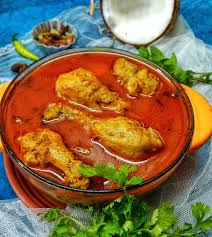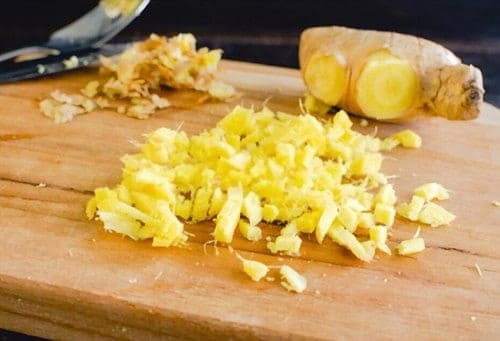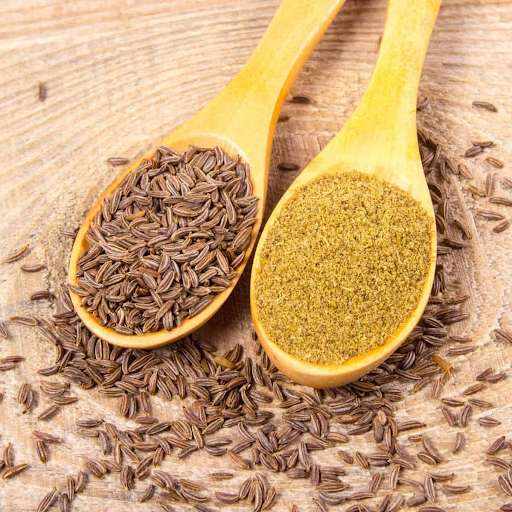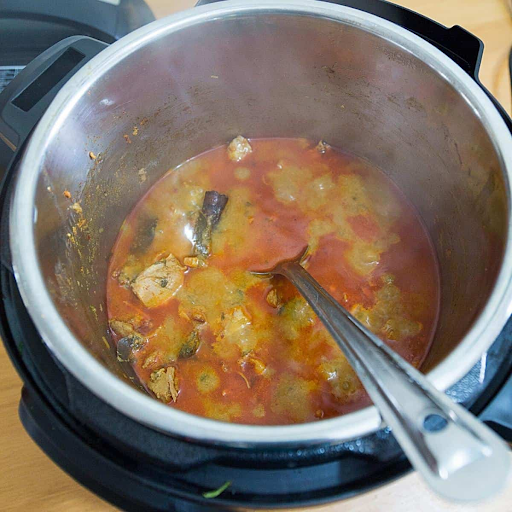Step-by-Step Guide to Making Delicious Chicken Curry
Chicken curry is a famous dish delighted in different foods all over the planet, especially in Indian, Thai, and South Asian cooking. It is a tasty and sweet-smelling dish made with chicken pieces cooked in a rich, flavored sauce or sauce. Chicken curry recipes can fluctuate extraordinarily concerning fixings and cooking techniques, offering a different scope of flavors and surfaces.
What is Chicken Curry?
Chicken curry commonly comprises chicken pieces (like bone-in or boneless chicken thighs or bosoms) stewed in a sauce produced using a mix of flavors, spices, aromatics, and different fixings. The sauce base can shift contingent upon territorial inclinations and individual recipes, yet generally incorporates fixings like onions, tomatoes, garlic, ginger, and different flavors, for example, turmeric, cumin, coriander, bean stew powder, and garam masala.
The dish is known for its perplexing flavor profile, joining components of pleasantness, tartness, and hotness. It tends to be acclimated to suit individual taste inclinations, with varieties going from gentle and rich to sweltering and red hot. Chicken curry is frequently presented with rice, bread (like naan or roti), or different backups like potatoes or vegetables. A flexible dish can be delighted in as a generous feast for lunch or supper, and it is cherished by individuals, all things considered.Read More
About this recipe
This step by step guide will walk you through the method involved with making a delectable chicken curry without any preparation. Whether you're a carefully prepared gourmet expert or a fledgling in the kitchen, this recipe is not difficult to follow and vows to convey a delectably sweet-smelling and delightful dish that will dazzle your loved ones.
Starting with the rudiments, we'll begin by choosing excellent chicken pieces, either bone-in or boneless, as per your inclination. The decision of chicken cut can impact the surface and profundity of flavor in the last dish.
Then, we'll dive into the rich woven artwork of flavors and flavors that structure the foundation of any great curry. From hearty turmeric to fragrant cumin and coriander, each zest adds its own extraordinary flavor profile to the dish. We'll direct you on the most proficient method to adjust these flavors to accomplish the ideal mix of intensity, warmth, and profundity of flavor.
As we travel through the cooking system, we'll investigate the specialty of building layers of flavor, beginning with the sautéing of onions, garlic, and ginger to make a fragrant base for our curry. We'll tell you the best way to cajole out the normal pleasantness of tomatoes and the unobtrusive intensity of green chilies to improve the general intricacy of the dish.
All through the stewing system, we'll show how to mix the chicken with the rich kinds of our flavor-imbued sauce, guaranteeing that each delicate piece is covered in an extravagant cover of fragrant goodness.
For those hoping to raise their curry higher than ever, we'll present discretionary fixings, for example, coconut milk for smoothness, yogurt for tartness, and cashew glue for added wealth. These fixings offer a tempting cluster of flavor varieties, permitting you to tweak your curry to suit your taste inclinations.
At long last, we'll share tips on the most proficient method to embellish your chicken curry with new cilantro leaves for an explosion of home grown newness and a crush of lemon or lime juice for a dash of splendor.
By following this step by step guide, you'll have the option to make a tasty chicken curry that is overflowing with flavor and sure to turn into a staple in your culinary collection. So focus in, accumulate your fixings, and we should set out on a culinary excursion to curry flawlessness.
Ingredients Needed
Main Ingredients:
Chicken pieces (bone-in or boneless, thighs or breasts)
Cooking oil (such as vegetable oil or ghee)
Onions, finely chopped or sliced
Tomatoes, chopped or pureed
Garlic cloves, minced or crushed
Ginger, grated or minced
Green chilies, chopped (adjust according to spice preference)
Salt, to taste
Water or chicken broth
Spices and Seasonings:
Turmeric powder
Cumin powder
Coriander powder
Chili powder (or paprika for a milder version)
Garam masala powder
Whole spices (such as cinnamon sticks, cardamom pods, cloves, and bay leaves)
Optional Ingredients for Variations:
Coconut Milk or Cream:
Adding coconut milk or cream to your chicken curry makes a rich and smooth surface with an inconspicuous smidgen of pleasantness. It's a famous expansion in numerous South Asian and Southeast Asian curry recipes. Coconut milk is made by separating the fluid from ground coconut meat, while coconut cream is thicker and more extravagant as it contains less water. The two choices give an extravagant mouthfeel and balance out the flavors in the curry.
Yogurt or Sharp Cream:
Yogurt or sharp cream can be utilized to add a tart flavor to your chicken curry. It likewise assists with softening the chicken and adds a velvety consistency to the sauce. Yogurt is usually utilized in Indian cooking to adjust the intensity of flavors, while harsh cream can furnish a comparative impact with a somewhat unique flavor profile. Make certain to mix the yogurt or sharp cream into the curry delicately to forestall coagulating.
Cashew Glue or Ground Almonds:
For added extravagance and nuttiness, you can integrate cashew glue or ground almonds into your chicken curry. These fixings thicken the sauce and confer an inconspicuous nutty flavor, hoisting the dish to another degree of guilty pleasure. To make cashew glue, just mix splashed cashews with a little water until smooth. Ground almonds can be arranged much the same way by crushing almonds into a fine powder.
New Cilantro Leaves, Hacked:
Cilantro, otherwise called coriander leaves, adds a new and fragrant flavor to chicken curry. Hacked cilantro is much of the time utilized as a trimming not long prior to lighting up the dish and giving an explosion of natural newness. It supplements the warm flavors in the curry and adds a lively green tone to the show.
Lemon or Lime Juice:
Adding a sprinkle of lemon or lime juice to your chicken curry gives an invigorating citrusy note that adjusts the extravagance of the sauce. It adds brilliance and profundity to the flavor profile, upgrading the general taste of the dish. The corrosiveness from the citrus juice assists with slicing through the lavishness of the curry, making it more energetic and tasty.
Diced Potatoes, Carrots, or Chime Peppers:
Counting diced potatoes, carrots, or chime peppers in your chicken curry adds additional surface and flavor. These vegetables ingest the kinds of the flavors and sauce while contributing their own remarkable taste and variety. Potatoes add goodness and assist with thickening the curry, while carrots and chime peppers give pleasantness and crunch. You can redo the vegetable determination in view of your inclinations and what you have close by.
Spinach or Other Mixed Greens:
Adding spinach or other mixed greens, for example, kale or collard greens to your chicken curry helps its dietary benefit and adds a pop of energetic variety. Mixed greens shrivel down when cooked in the sauce, imbuing it with nutrients and minerals while adding an unpretentious natural flavor. They likewise give a satisfying differentiation in surface to the delicate chicken pieces and smooth sauce.
Tamarind Glue or Mango Powder:
Tamarind glue or mango powder (amchur) can be utilized to present a tart and sharp flavor to your chicken curry. Tamarind glue is produced using the mash of the tamarind products of the soil with a somewhat sweet and tart taste, while mango powder is produced using dried unripe mangoes and gives a sharp and fruity flavor. These fixings are normally utilized in Indian cooking to adjust the lavishness of curries and improve their intricacy of flavors.
Preparation Before Cooking:
Marinating the Chicken:
Start by marinating the chicken pieces to inject them with flavor and delicacy. In a blending bowl, join the chicken pieces with yogurt, lemon juice, minced garlic, ground ginger, and a sprinkle of salt. Blend well to cover the chicken equitably, then, at that point, cover and refrigerate for no less than 30 minutes to permit the flavors to merge. Marinating the chicken improves its taste as well as assists with softening it for a delicious and delicious surface.
Setting up the Zest Blend:
While the chicken is marinating, set up the zest blend that will shape the groundwork of your curry's flavor profile. In a little bowl, consolidate ground flavors, for example, turmeric powder, cumin powder, coriander powder, stew powder, and garam masala. Change the amounts as indicated by your taste inclinations and wanted degree of heat. You can likewise add entire flavors like cinnamon sticks, cardamom cases, cloves, and narrow leaves for added profundity and smell. Blending the flavors ahead of time permits them to sprout and foster their flavors when added to the curry.
Slashing Vegetables:
Set aside some margin to slash the vegetables that will be integrated into your chicken curry. Normal vegetables utilized in curry recipes incorporate onions, tomatoes, ringer peppers, carrots, potatoes, and green chilies. Finely hack the onions and tomatoes, and dice different vegetables into uniform pieces to guarantee in any event, cooking. You can likewise set up extra ingredients like new cilantro leaves for decoration and some other discretionary vegetables you intend to incorporate. Having every one of the vegetables prepared and all set will smooth out the cooking system and make it more straightforward to gather your curry later on.
By finishing these arrangement ventures prior to cooking, you'll place yourself in a good position and guarantee that your chicken curry turns out delightful, sweet-smelling, and impeccably cooked. With the chicken marinated, flavor blend prepared, and vegetables slashed, you'll be exceptional to handle the following phases of the cooking system effortlessly.
Cooking Process:
Sautéing Onions and Garlic:
Heat a huge skillet or Dutch stove over medium intensity and add a tablespoon of cooking oil. When the oil is hot, add the finely chopped onions and sauté until they become brilliant brown and clear, mixing periodically to forestall consumption. This interaction can require around 5-7 minutes.
When the onions are caramelized, add the minced garlic to the skillet and proceed to sauté for one more moment until the garlic becomes fragrant. Be mindful so as not to allow the garlic to consume, as it can give a severe taste to the curry.
Adding the Flavor Blend:
With the onions and garlic pleasantly sautéed, now is the right time to add the pre-arranged flavor blend to the skillet. Sprinkle the zest blend equally over the onions and garlic, mixing persistently to cover them in the fragrant flavors. Permit the flavors to toast somewhat in the oil, delivering their flavors and fragrances. This step assists with developing the intricacy of the curry's flavor profile.
Cooking the Chicken:
When the flavors are fragrant, add the marinated chicken parts of the skillet, alongside any marinade left in the bowl. Increment the intensity to medium-high and cook the chicken, blending periodically, until it is gently sautéed on all sides. This step assists with fixing in the juices and fostering a rich flavor base for the curry.
Contingent upon the size of the chicken pieces, cooking time might differ, yet regularly it requires around 8-10 minutes for the chicken to cook through.
Adding Tomatoes and Different Fixings:
When the chicken is cooked, add the cleaved tomatoes to the skillet and mix well to join. The tomatoes will deliver their juices and assist with making a delectable sauce for the curry.
At this stage, you can likewise add any discretionary fixings, for example, diced potatoes, carrots, ringer peppers, or different vegetables. These vegetables will cook close to the chicken, engrossing the kinds of the flavors and adding surface to the curry.
Stewing and Permitting Flavors to Mix:
Bring down the intensity to medium-low and cover the skillet with a top. Permit the chicken curry to stew delicately for around 15-20 minutes, permitting the flavors to merge together and the vegetables to mellow.
During this time, intermittently take a look at the curry and mix it to forestall staying and guarantee in any event, cooking. In the event that the curry shows up excessively thick, you can add a sprinkle of water or chicken stock to change the consistency.
Taste the curry and change the flavoring on a case by case basis, adding more salt or flavors as indicated by your inclination.
Serving and Enjoying Your Chicken Curry:
Serving Ideas:
- When your chicken curry is cooked flawlessly, now is the right time to plate up and appreciate it! Here are some serving ideas to lift your eating experience:
- Serve the chicken curry hot, joined by steamed rice, naan bread, or roti for a good and fulfilling feast.
- Embellish the curry with newly slashed cilantro leaves for an eruption of newness and lively variety.
- Add a crush of lemon or lime juice over the curry not long prior to improving its flavors and add a sprinkle of sharpness.
- For an extra liberal touch, sprinkle a spoonful of coconut cream or yogurt over the curry to add smoothness and wealth.
- Present with a side of customary Indian sauces like mango chutney, raita (yogurt plunge), or salted vegetables to supplement the kinds of the curry.
- Go with the dinner with a reviving refreshment, for example, lassi (yogurt drink), mango juice, or a chilly lager to adjust the flavors and cool the sense of taste.
Putting away Extras:
- Assuming you have any extras of your delectable chicken curry, you can store them appropriately to appreciate later:
- Permit the extra curry to cool totally prior to moving it to an impermeable holder or resealable plastic pack.
- Store the curry in the fridge for up to 3-4 days, guaranteeing that it is appropriately fixed to forestall tainting and keep up with newness.
- To warm the curry, basically move it to a microwave-safe dish and intensity on medium power in short spans, mixing periodically, until warmed through.
- On the other hand, you can warm the curry on the burner over low to medium intensity, mixing incidentally, until it arrives at the ideal temperature.
- Make certain to dispose of any extras that have been forgotten about at room temperature for over 2 hours to keep away from the gamble of foodborne sickness.
Taste as you go:
All through the cooking system, taste the curry and change the flavoring depending on the situation. This permits you to tweak the flavors and guarantee that the curry is impeccably prepared as you would prefer.
Modify flavor levels: Change how much bean stew powder or green chilies as indicated by your zest resistance. You can constantly begin with a more modest sum and add all the more later on the off chance that you incline toward a spicier curry.
Try not to rush the cooking system:
Permit the onions to caramelize appropriately and the flavors to toast delicately prior to adding the chicken. This additional step adds profundity and intricacy to the king of the curry.
Pro Tips:
Utilize bone-in chicken for added character:
Bone-in chicken pieces, like thighs or drumsticks, add lavishness and profundity of flavor to the curry. Furthermore, they stay succulent and delicate during the cooking system.
Toast entire flavors for additional smell:
If involving entire flavors in your curry, softly toast them in a dry skillet prior to crushing or adding them to the dish. This delivers their medicinal balms and upgrades their smell and flavor.
Use yogurt for delicate chicken:
Marinate the chicken in yogurt prior to cooking to soften the meat and imbue it with flavor. The sharpness in the yogurt assists with separating the proteins, bringing about delicious and delicious chicken.
Allow the flavors to merge:
For the best outcomes, permit the curry to stew delicately for a lengthy period, permitting the flavors to merge together and foster profundity. This sluggish cooking process brings about a rich and tasty curry that tastes shockingly better the following day.
Offset flavors with sharpness:
A bit of causticity from lemon or lime juice can light up the kinds of the curry and equilibrium out the extravagance of the sauce. Add a press of citrus squeeze not long prior to effectively hoisting the dish.
Decorate with new spices:
Polish off your chicken curry with a sprinkle of newly hacked cilantro leaves for an eruption of newness and variety. This adds an energetic final detail to the dish and improves its visual allure.
Conclusion
In conclusion, becoming the best at making tasty chicken curry is a compensating venture that permits you to investigate the rich and lively kinds of Indian cooking. By following the bit by bit guide and integrating the proposed tips and methods, you can make a chicken curry that is overflowing with flavor, fragrance, and intricacy.
From marinating the chicken to sautéing onions and garlic, adding the ideal mix of flavors, and permitting the flavors to merge together during stewing, each step assumes a significant part in making a curry that is genuinely remarkable. By redoing the recipe with discretionary fixings and changing flavor levels to suit your taste inclinations, you can fit the curry as you would prefer and make a dish that is interestingly yours.
Whether presented with steamed rice, naan bread, or your number one backup, chicken curry is a flexible and fulfilling dish that is ideally suited for any event. With appropriate capacity, you can partake in the extras of your custom made curry for quite a long time into the future, it is relished and delighted in to guarantee that each and every nibble.
Generally, making chicken curry isn't just about preparing a feast — about making an encounter that pleases the faculties and unites individuals around the supper table. So focus in, accumulate your fixings, and set out on a culinary experience to find the delights of custom made chicken curry.
Nutritional Info
The wholesome data for chicken curry can shift contingent upon elements, for example, the particular fixings utilized, segment size, and cooking strategies. In any case, here's an overall outline of the wholesome parts of chicken curry per serving:
Calories: Around 250-400 calories for every serving, contingent upon the recipe and piece size.
Protein: Chicken is a decent wellspring of protein, giving roughly 20-30 grams for each serving.
Fat: The fat substance in chicken curry can change contingent upon elements, for example, the cut of chicken utilized and how much oil or coconut milk added to the recipe. For the most part, chicken curry contains around 10-20 grams of fat for each serving.
Sugars: The carb content in chicken curry principally comes from fixings like onions, tomatoes, and any extra vegetables added to the dish. It regularly goes from 10-20 grams for every serving.
Fiber: Contingent upon how much vegetables are remembered for the curry, it might give a moderate measure of dietary fiber, ordinarily around 3-5 grams for every serving.
Sodium: The sodium content in chicken curry can change contingent upon how much salt and different flavors utilized in the recipe. It's fitting to utilize salt sparingly and settle on low-sodium stock or coconut milk if watching sodium admission.
It's vital to take note that these qualities are rough and can shift in view of individual recipes and fixings utilized. Also, dietary data might vary relying upon whether the curry is hand crafted or locally acquired. In the event that you have explicit dietary worries or prerequisites, for example, low-carb or low-fat eating regimens, it's ideal to work out the wholesome data in light of the particular fixings and piece sizes utilized in your recipe.
More similar Recipes
Unveiling the Secrets of Butter Chicken: Step-by-Step Guide
The Ultimate Guide to Making Delicious Chicken Biryani at Home
Mastering the Art of Malai Kofta: A Beginner's Guide
Nutritious and Delicious Mixed Vegetable Recipes for a Healthy Lifestyle





































0 Comments